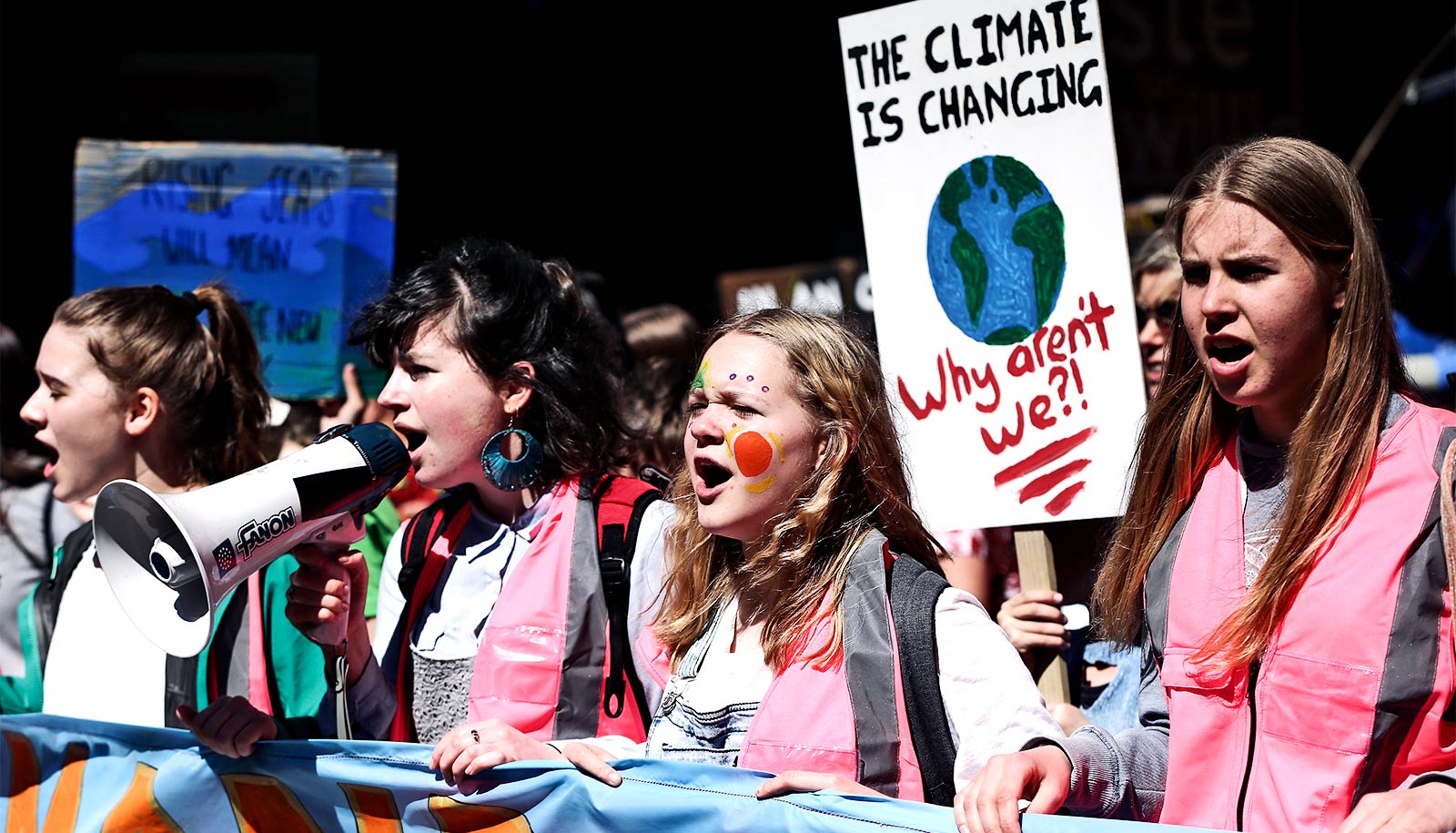Textbooks worldwide are more likely to present social movements as historical events than as a form of active citizenship, according to a new study.
A study of more than 500 high school civics and history textbooks from around the world finds that discussions of both individual human rights and collective social movements have increased in textbooks since World War II.
While human rights have been widely included in civics textbooks, however, social movements are more likely to appear in history textbooks—potentially discouraging teachers from introducing collective action as a way for students to engage in civic life, say Nadine Ann Skinner, a doctoral student at Stanford Graduate School of Education, and Patricia Bromley, an assistant professor at GSE.
“We were excited to see that there have been efforts to teach students more about collective action, but we were concerned that it hasn’t been presented as part of contemporary citizenship in the same way that human rights have,” says Skinner, the study’s lead author. “The books that are discussing movements don’t seem to be describing them in present tense.”
The study is the first cross-national analysis of how discussions of social movements in textbooks have evolved over time.
Social movements vs. human rights
While research has indicated growth in social movements since World War II, the extent to which these movements have been incorporated into formal education has not been well studied, the researchers say.
Their study distinguishes between human rights and social movements by identifying human rights as those belonging to individuals, while social movements are focused on the collective rights of specific groups, such as women or minorities.
In the post WWII era, human rights began to be seen as universal, stemming from the condition of being human, the researchers say. Social movements, on the other hand, often challenge current power structures, including the government itself, on behalf of marginalized groups.
“The collective nature of social movements makes them contentious because they can put groups in conflict with each other, as well in conflicts with the state,” Skinner says.
The researchers suggested this distinction might account for why social movements are more frequently relegated to the annals of history. “By framing social movements as historical events that have ended, and the challenges overcome, the state may discourage further investigation of current injustices related to ethno-racial divisions, gender, labor, or the environment,” the study notes.
As one example of how social movements are presented as finite historical events, Skinner points to a US history textbook that addresses progress made by the civil rights movement in the late 1960s. In the book, students are asked to think about what opportunities minorities have today that they didn’t have before, which assumes that the struggle for civil rights was a thing of the past, she says.
Textbooks around the world
The researchers analyzed 556 secondary school textbooks from 80 countries published between 1950 and 2011. To collect data for the project, Bromley spent two months at the Georg Eckert Institute for International Textbook Research in Germany, which houses one of the largest textbook collections in the world.
Previous research has shown how textbooks have been used to promote intolerance and nationalism as well as peace and global citizenship. Skinner and Bromley set out to study textbooks to get at how human rights education and social movements reflect wider social values.
“There’s a basic assumption that the content of textbooks matters, both because it reflects predominant assumptions of what’s considered legitimate or important, and also because it tells students that something is a legitimate narrative,” Bromley says.
Looking at textbooks from around the world also allowed Skinner and Bromley to track global trends in education, including an increase in discussions of human rights and social movements from one decade to another.
Their research also revealed the globalized character of the changes. “Despite some regional differences, we see many similarities in the trajectories in countries and regions over time,” Bromley says.
While the study did not discuss specific countries, Skinner notes regional variations in the data. The Middle East, for example, was less likely than the West to discuss the women’s or labor movement, while East Asia was more likely to discuss the environmental movement. They also found that Latin American and Sub-Saharan African textbooks were more likely to discuss human rights than other regions of the world.
The researchers hope their study brings awareness to the value of infusing collective action into citizenship education. “That in itself would be a big shift,” Bromley says. “Some of the biggest changes in the world have happened through social movements and collective action.”
The research appears in Comparative Education Review.
Source: Charlotte West for Stanford University


